Fessenden and Stanley, together again
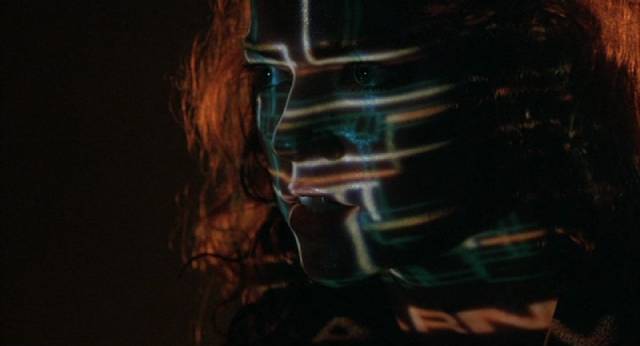
Having recently watched Larry Fessenden’s Depraved and Richard Stanley’s Color Out Of Space I thought it was time to revisit their early work, films which I hadn’t watched in more than a decade. And since it had been so long, I figured maybe I should upgrade from my old DVD editions before I started. On eBay, I found a copy of Roninflix’ out-of-print two-disk Blu-ray edition of Stanley’s Hardware (rather overpriced, but from what I’d read it’s definitely the edition to own) and Shout! Factory’s Larry Fessenden Collection, an extras-packed four-disk set of his first four features. I also looked for a Blu-ray of Stanley’s Dust Devil and discovered that it only seems to have been released in Germany by Koch; I was too late for their collector’s edition, which seems to duplicate the contents of Subversive’s five-disk DVD set (with the addition of a CD and all the documentaries only in standard definition), as it’s already out of print. However, I did just order their standard edition, which has the feature in three different cuts, plus some extras.
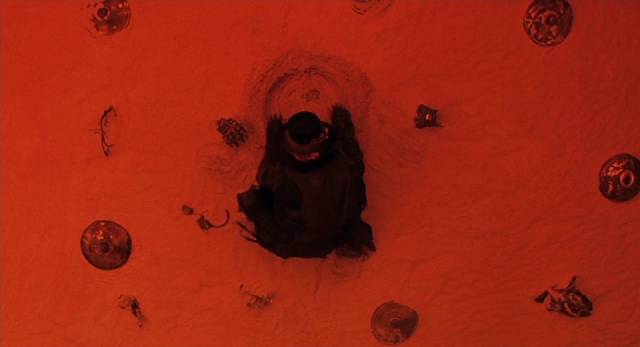
Hardware (Richard Stanley, 1990)
Hardware (1990) looks spectacular on the Blu-ray, with fine detail and contrast and natural film grain; the colours are richly saturated, pointing to the influence of Mario Bava, giving the mix of sci-fi and horror a Gothic mood. Stanley was in his early twenties when he made the film and it’s remarkably assured for a young filmmaker’s first feature. He manages to take a lot of familiar elements and blend them with feverish originality, making the most of limited resources by keeping much of the action in a single claustrophobic space without ever succumbing to monotony.
The film was one of the first productions of Palace Films, a company which had emerged from the legendary Scala repertory cinema in London – I had a membership when I was living in London during the summer of 1985; their programming was remarkably eclectic and frequently transgressive and that attitude went into their production activities (in those early days, in addition to Hardware, they backed Neil Jordan’s The Company of Wolves [1984]). To boost the budget, Palace teamed up with Miramax, which at the time was just beginning to move from distribution to production. That forced changes to the script, which Stanley talks about in a lengthy new interview on the disk, along with some amusing anecdotes about the cluelessness of the Weinstein brothers.
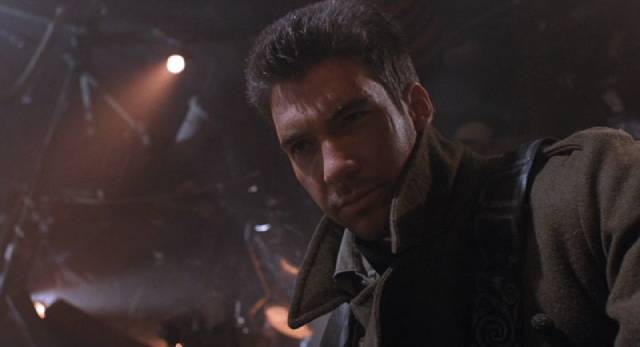
One of the big changes was rethinking some of the characters to accommodate American actors – the male lead, played by Dylan McDermott, although still a problematic and unreliable partner for the female lead, apparently became more likeable. But Stanley stopped short of making him the hero. The central role belongs to Stacey Travis as Jill, an artist who lives in an apartment surrounded by the detritus of a collapsed industrial economy which she works into large, angry-looking sculptures with an acetylene torch. McDermott as Mose drifts in and out of her life, a scavenger who scrapes a living by dealing in the kind of junk Jill turns into her art.
When he returns this time, he brings her a gift he bought from another scavenger, a nomad who scours the scorched desert wasteland for whatever has been left behind by some catastrophe. Mose presents Jill with the severed head and other scraps of a robot, assuming it was some kind of labour droid. Unfortunately, it turns out to be part of a high-level military prototype, the M.A.R.K. 13, which possesses the power to reconstitute itself to keep fighting. Having been incorporated into one of Jill’s sculptures, it draws power from the grid and creates a new body for itself, equipped with various makeshift weapons (a big circular saw, a large power drill) and begins to wage war on Jill … and eventually anyone else who enters her space.
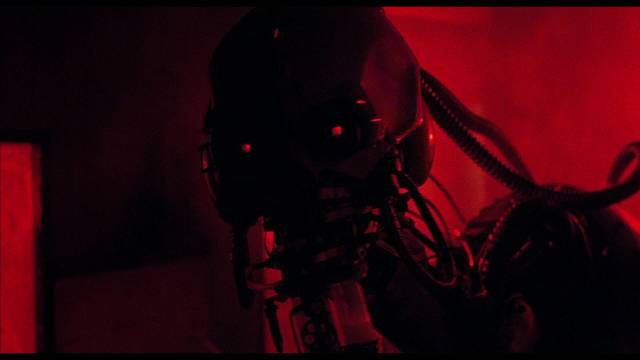
These enemies include Mose and his stoner friend Shades (John Lynch, who the Weinsteins wanted to replace because they couldn’t understand his Irish accent), the building’s security team, and a really unsavoury William Hootkins who plays a voyeuristic neighbour who masturbates while spying on Jill through a long camera lens and comes by when he sees something strange going on, only to meet a gruesome end.
Thanks to cinematographer Steven Chivers – like Stanley, working on his first feature – the film’s look belies the tight budget; the creative lighting and constant camera movement give it visceral energy and a sense of scale so that even though we may not see much, we get the impression of a larger world within which the action takes place … an impression greatly aided by some location shooting in the desert of Morocco. Hardware exudes an air of ambition supported by great self-confidence and holds up really well after thirty years, particularly because the production design and mechanical effects have a tactile quality which creates a real sense of danger (the killer robot was right there on set rather than added later with CGI).
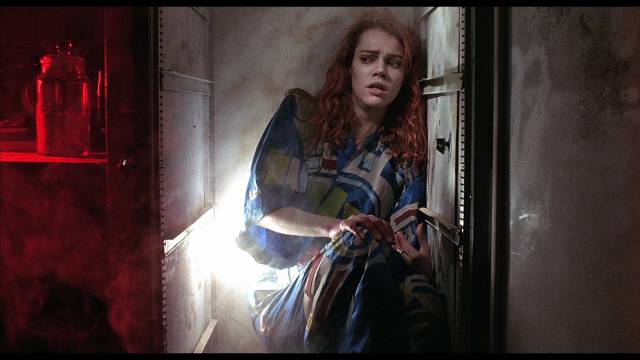
The film is given additional power by a soundtrack overseen by Simon Boswell, which includes a theme song by Public Image Ltd, and additional tracks by Ministry, Motörhead and Iggy Pop, all adding an edgy punk/metal texture to the intense imagery. Stanley even managed to get Iggy Pop to play the unseen “narrator”, radio DJ Angry Bob, who opens and closes the film, while Motörhead’s Lemmy turns up as a chatty cab driver.
The Roninflix Blu-ray duplicates everything from Severin’s old two-disk special edition DVD, but the new 4K scan from the original negative is a huge advance over the SD image. The movie looks as if it could’ve been shot last week. Stanley’s commentary is carried over along with a selection of deleted scenes (taken from a lo-res tape) on the first disk, with the second disk containing Severin’s making-of documentary, a brief interview with Iggy Pop, a pair of Stanley’s short films and a brief piece about the unmade sequel, plus the almost absurdly ambitious Incidents in an Expanding Universe, a 45-minute 8mm epic made by Stanley in his late teens, which establishes the post-apocalyptic world of Hardware; it deals with the stressed relationship of the later film’s couple, but without the killer robot. It also throws in miniatures – a cityscape and flying cars.
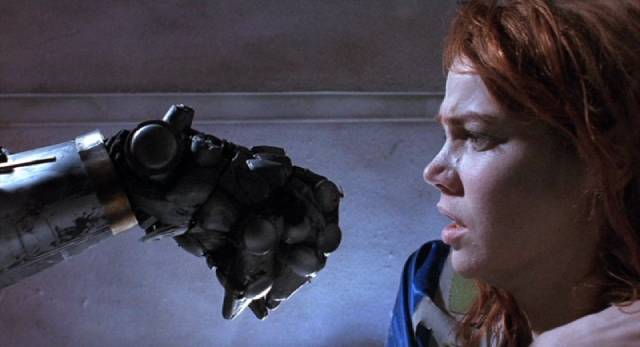
The one new addition is an engaging 40-minute interview in which Stanley looks back over his career and the place of Hardware in his life (during which he relates those anecdotes about the Weinsteins, free to be honest in the wake of Harvey’s very public disgrace). As always, Stanley is a fascinating and eccentric character.
Although I wound up paying a ridiculous amount for the out-of-print set, it’s well worth the upgrade and the recent interview definitely helps to take the sting out of the purchase.
*
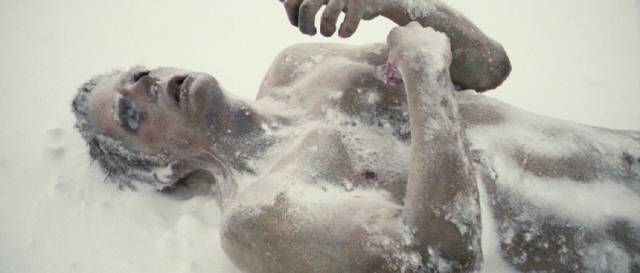
The Larry Fessenden Collection (1991-2006)
If the word auteur has any validity, it certainly applies to Larry Fessenden. He makes relatively low-budget independent features over which he appears to have complete control (they’re produced by his own company, Glass Eye Pix) and they all express a consistent world-view. Fessenden is concerned with our arrogance and hubris towards the planet which is our only available home, and angry about our stupidity and self-destructive behaviour. We commit endless offences against the environment in the name of supposed short-term benefits, which usually amount to immediate corporate profits which take no account of long-term costs. He explores these themes through dramas in which the characters’ relationships and conflicts are reflected through the tropes of the horror genre.
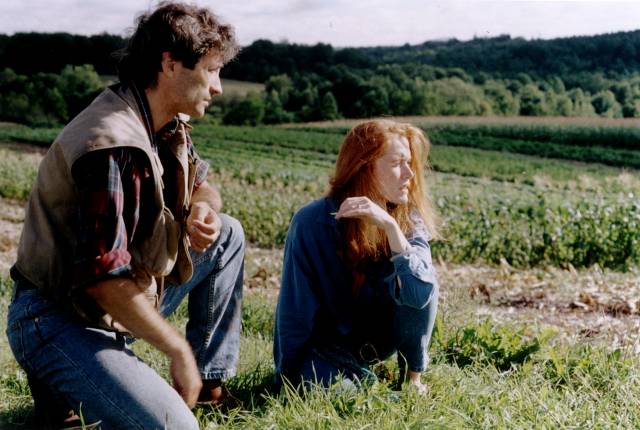
in Larry Fessenden’s No Telling (1991)
Those tropes include variations on the Frankenstein story (No Telling, Depraved), vampires (Habit) and Nature’s revenge (Wendigo, The Last Winter) … I guess the latter could also be applied to the work-for-hire Beneath, the only one of his features which he didn’t write or co-write himself. Since his first feature, No Telling (1991), some have criticized Fessenden’s work for being “obvious” and “preachy” because he unselfconsciously puts his point of view up there on screen. He has no compunctions about stating openly what he wants to say, which of course was considered a creative sin in old Hollywood. (“If you want to send a message, call Western Union.”) Of course, what actually matters is how you send the message, and Fessenden does that through dramatic situations and character conflicts. Perhaps at least some of the criticism is simply a result of viewers being annoyed by the message – a call for more thoughtful engagement with the environment, for animal rights, against corporate practices which trash the planet. These entirely unexceptional positions are often taken by people as personal criticism because they’d rather not think about things which might require them to change the way they live.
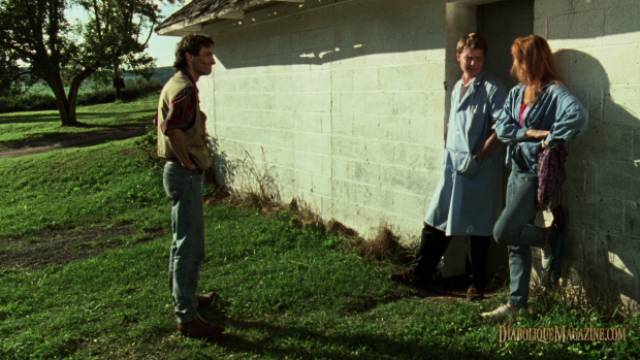
Although Fessenden’s films all qualify as horror, they fall into two fairly distinct categories – what might be termed physical (No Telling, Depraved) and supernatural (Wendigo, The Last Winter), with his masterpiece Habit bridging the two. Fessenden himself and some commenters assert that the supernatural elements are left open to interpretation, but personally I don’t feel that these films hold up narratively if you try to apply a strictly psychological interpretation to their manifestations of otherness. What remains consistent throughout the films is the emphasis on characters and their relationships and the effects on them of the various horror tropes.
In both No Telling and Wendigo, the horror ends up destroying what begins as a seemingly secure family. In the former, medical researcher Geoffrey Gaines (Stephen Ramsey) and his artist wife Lillian (Miriam Healy-Louie) move to a farm in bucolic upstate New York where Geoffrey has been set up with a lab by his biotech employer. Here in isolation, away from prying eyes (including Lillian’s), he immerses himself in his work on transplants and ways to suppress tissue rejection; beginning with small animals, he quickly seeks out larger, more complex subjects, determined to graduate to primates before the summer ends. With his bosses slow to respond to requests for chimps, he improvises by setting a trap in nearby fields. His first victim is a badger; later it’s a neighbour’s dog. Eventually he buys a calf from another neighbour.
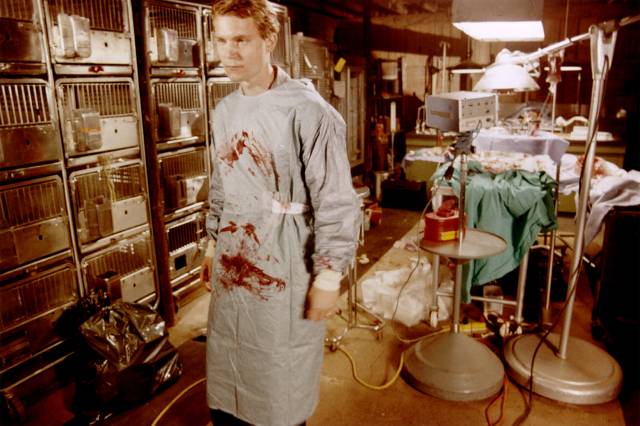
Meanwhile, Lillian responds to the landscape on an emotional and aesthetic level. She also responds emotionally to Alex Vine (David van Tieghem), an environmentalist studying the area and helping some of the farmers wean themselves off chemicals in an attempt to restore land long contaminated with pesticides (and perhaps heal farmers and their families suffering from illnesses brought on by that contamination). As Geoffrey becomes more secretive and distant, Lillian begins to question the nature of his work. She is closer temperamentally to Alex and his affinity to the natural world, than to Geoffrey who views that world merely as raw material to be exploited for professional and financial gain.
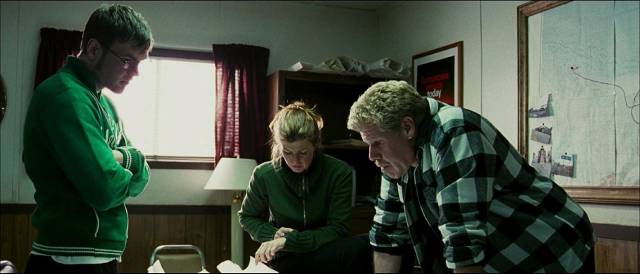
While this situation is undeniably schematic, Fessenden fleshes it out with intelligence and dramatic force; the personal conflicts have emotional resonance and the scenes in which the characters argue their positions have impact because they grow out of firmly established personalities. Certainly, there’s no question of where Fessenden himself stands on the issues – the depiction of vivisection gives the film an often uncomfortable intensity, and the climactic moment in which Lillian finally discovers what her husband has been working on is genuinely horrific. The marriage which at first seemed warm and secure has been shattered beyond repair; we need to restore a balance between ourselves and nature if we want to survive.

This latter point is the core theme of The Last Winter (2006), which takes place at a drilling camp being established in the Arctic Wildlife Reserve, one of the last untouched areas on the planet. The crew is overseen by Ed Pollack (Ron Perlman), a man who is sick of having his project delayed by environmental assessments being performed by James Hoffman (James Le Gros), whose work makes it unlikely that drilling can begin this year. The personal conflict between the two men is aggravated by the fact that team member Abby Sellers (Connie Britton) has begun a relationship with Hoffman; Pollack takes this as personal rejection, but there’s some ambiguity about her motives as her closeness to Hoffman allows her to keep an eye on his evolving reports.
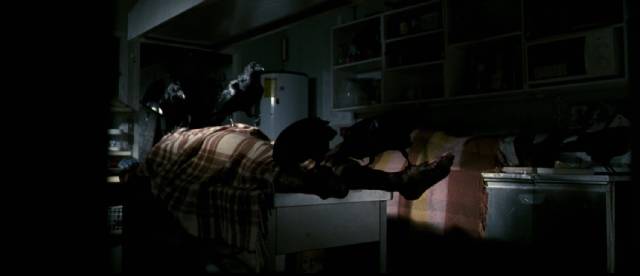
But fighting among themselves proves to be the least of their worries as the weather closes in and members of the team begin to crack – at first, this seems to be an effect of their isolation, but gradually it becomes apparent that the land itself is alive and has begun to fight back against encroaching human technology. This resistance is manifested as ghostly animal spirits, herds of phantom migrating caribou, and eventually an elaborate version of the Wendigo, a primal spirit which traditionally haunts woodlands where it drives men mad and inspires cannibalism.
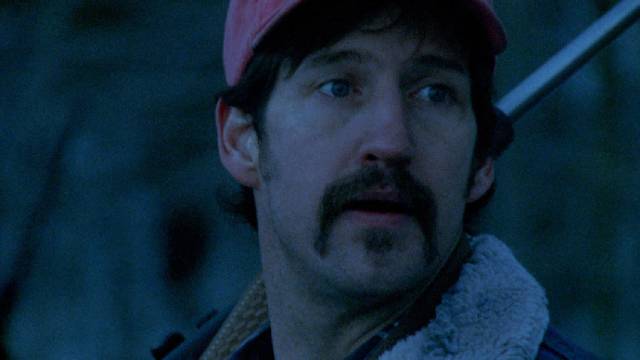
in Larry Fessenden’s Wendigo (2001)
That spirit had already shown up in Fessenden’s previous film, named simply Wendigo (2001). In this, we have another initially happy family which ends up torn to shreds by a mix of natural and supernatural forces. George (Jake Weber), a photographer stressed by his work for an advertising agency, takes his wife Kim (Patricia Clarkson) and young son Miles (Erik Per Sullivan) on a winter weekend getaway in upstate New York, renting a house which turns out to have some problems. But before they even get there, they hit a deer which runs out in front of them on the dark, icy road and the car ends up stuck in a ditch.
As if that weren’t enough, it turns out the deer was being pursued by a group of hunters and one of them, Otis (John Speredakos), becomes aggressive and threatening because the collision damaged his trophy. Otis emerges as the ongoing physical menace – he feels that the house the family has rented should have been his own inheritance, but his sister sold it. So now, when he drives past, he has a tendency to shoot into it with his hunting rifle. Both George and Kim discover broken windows and bullets embedded in walls.
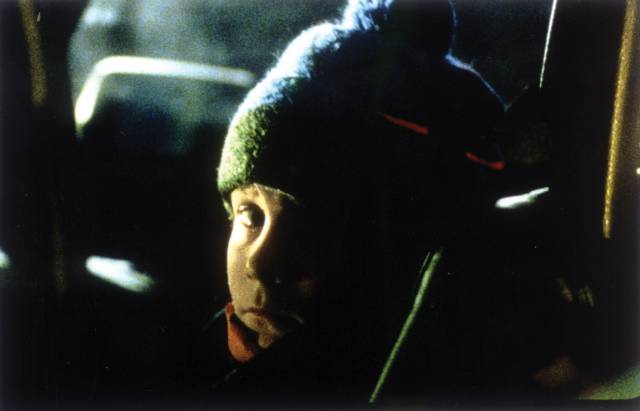
Parallel to the menace posed by Otis, young Miles becomes attuned to something more nebulous after a Native man gives him a small bone carving of the mythic Wendigo, a cross between man and stag which walks on its hind legs. The tension caused by Otis and his threatening attitude becomes embodied for Miles in this spirit which seems to haunt the woods around the house. It would be easier to see this as his young mind trying to make sense of nasty adult behaviour if the film didn’t climax with Otis’ own fatal encounter with the spirit, which seems to confirm its reality. Whether the malevolent spirit is engendered by human anger and violence or whether it exists independently is open to question, but the reality of the Wendigo seems indisputable.
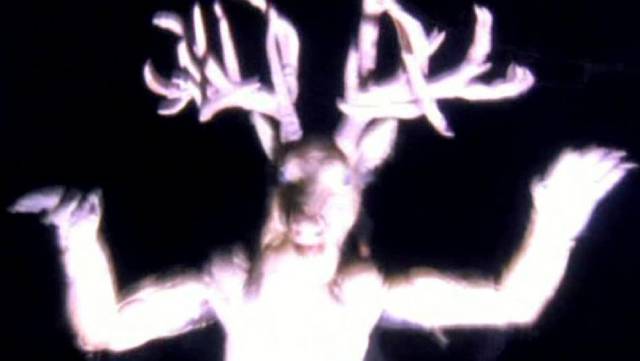
In his most recent feature, Depraved, Fessenden has come almost full-circle with a refined reiteration of the major theme of No Telling. The references to Frankenstein are even more explicit in this story of a dedicated scientist determined to do something for the benefit of humankind only to be manipulated and co-opted by the forces of corporate capitalism, which is only interested in short-term gains no matter what the ultimate cost might be to people and the environment. But as fine a film as Depraved is, I still consider his second feature to be his masterpiece.
Embedded into the myth of vampirism in most if not all of its iterations is the idea of addiction; vampires crave blood like a drug, the infection making of them monsters who destroy (often) those closest to them. As codified in Bram Stoker’s Dracula, the victim of the vampire will simply die unless the vampire forces them to drink his own blood, in which case they become a vampire themselves – he hooks his favourites on his drug of choice. With drug use becoming a far more public issue in the 1960s and ’70s, it’s not surprising that the idea of addiction should become text rather than subtext in popular culture – less metaphor than narrative fact. George Romero’s brilliant Martin (1977) explores this idea on multiple levels, foregrounding the brutal physical reality and surrounding it with various explanations which are intended to make it comprehensible (and bearable?): Tata Cuda dresses it in formal religious garb so that it fits with his worldview, while Martin himself dresses it in the iconography of horror movies so that he can see himself as a tragic antihero rather than a vicious monster.
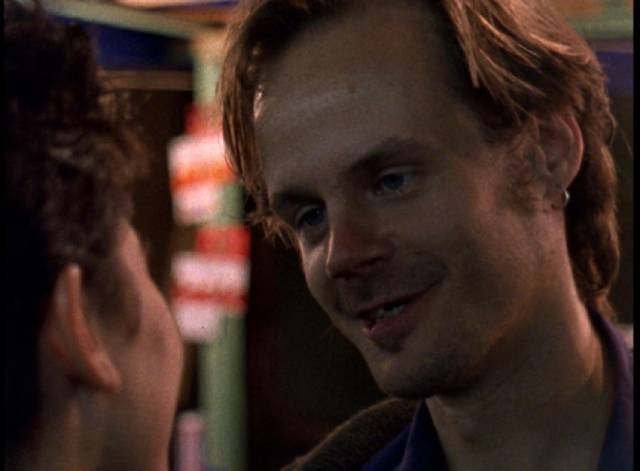
Before the abysmal transformation of the vampire into a figure of teen romance with the Twilight books and movies, the monster would keep resurfacing in popular culture (in part because, along with the drug metaphor, vampirism has also long had a sexual component – the thrill of forbidden exchanges of bodily fluids, illicit encounters in bedrooms, the throwing off of moral constraints). This includes a brief flurry of releases in the mid-’90s, beginning with Francis Ford Coppola’s Dracula (1992), which ramped up the doomed romance element which helped pave the way for Stephanie Meyer’s franchise; an approach also reflected in Neil Jordan’s 1994 adaptation of Anne Rice’s Interview With a Vampire. (Jordan returned with a much more interesting a complicated treatment of the genre in Byzantium [2012].) Much more interesting than these big studio productions were a trio of independent films: Michael Almereyda’s Nadja (1994), Abel Ferrera’s The Addiction and Fessenden’s Habit (both 1995).
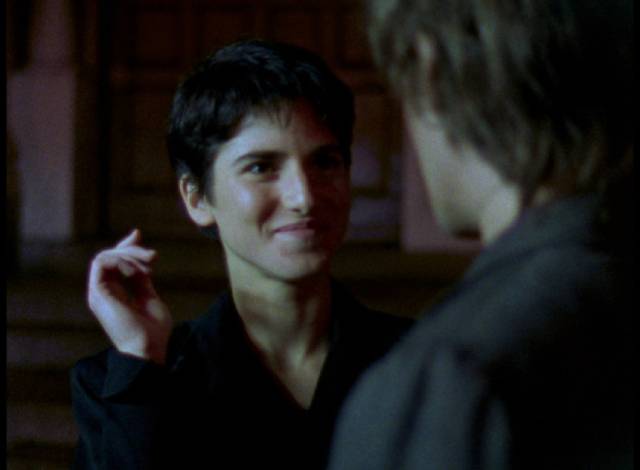
The first two are highly self-conscious, stylized works which use genre in ironic ways, expecting audiences to share their directors’ ironic distance, engaging with the material as a kind of intellectual play. (This is most pronounced in Ferrera’s movie, which centres on a PhD candidate working on a thesis in philosophy; she operates on a highly verbal intellectual level, but only comes to fully understand the meaning of existence through the physical horrors of vampirism before finally being unironically redeemed by Catholic ritual.) They walk a tightrope between offering us genre pleasures while insisting that we don’t take the narrative content too seriously, yet expecting us to take the filmmakers’ use of that material very seriously. Both films use expressive widescreen black-and-white cinematography to create a further level of detachment; they are movies about the ways in which we engage with movies.
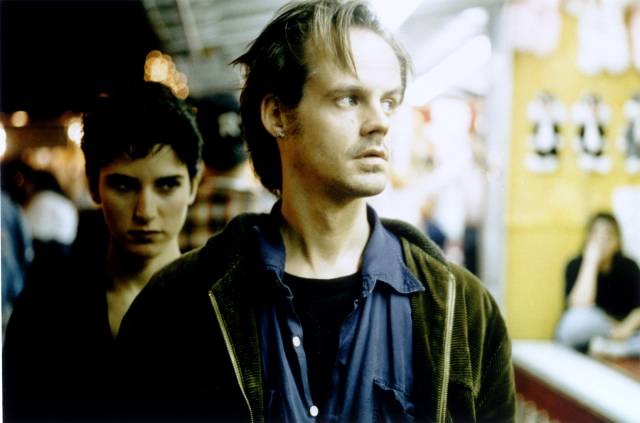
Habit, on the other hand, takes a very different approach. Shot in 16mm colour, with a 1.33:1 aspect ratio, it has a looser, more naturalistic tone which invokes cinema verite documentaries. In contrast to Ferrera’s transformation of New York into a conceptual urban space and Almareyda’s disregard of place in general, Fessenden’s film inhabits the actual city, embedding its story in the real world rather than the world of remembered movies. This tactic foregrounds the characters rather than the genre tropes, with the latter as a result creeping in more subtly, always playing off and reflecting the naturalistic psychology of these people living their lives in this particular city at this particular time.
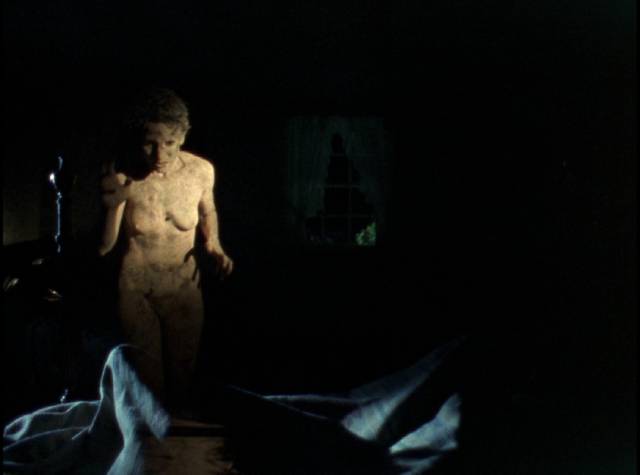
Fessenden himself plays Sam, manager of a small bar whose relationship with Rae (Patricia Coleman) is foundering when he meets a mysterious woman at a Halloween party. This is Anna (Meredith Snaider), who seems both seductive and elusive. She appears and disappears without warning, and only shows up at night. We only realize later that she’s the same woman Lenny (Jesse Hartman), a musician who plays at the bar, has been seeing recently; his health is rapidly going downhill and then he abruptly disappears. No one but Sam seems concerned – he’s a musician, they come and go…
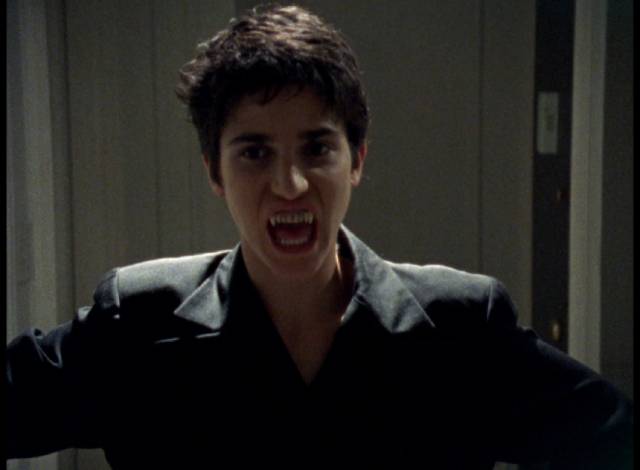
At the end of an evening together, Sam and Anna are pursued through a park by what appear to be a pack of wild dogs – or maybe wolves – over which Anna seems to have some kind of control. Perhaps stimulated by the danger, they engage in some primal sex beneath the trees and Sam wakes at dawn sprawled on the grass. This doesn’t seem terribly odd or unusual to him because he’s an alcoholic, used to blackouts and hangovers. The appeal of Anna is not unlike the appeal of booze; she gives him a thrilling high, and the crashing lows which follow at first just seem like a fair price. His friends Nick (Aaron Beall) and Liza (Heather Woodbury), and Rae as well, can see that he’s on a downward spiral, but as with any self-destructive “habit” it takes Sam too long to realize that the bad far outweighs the momentary pleasure.
Fessenden’s low-key, naturalistic approach to the story (and his wonderful, psychologically astute performance) give Habit an authentic air of tragedy – this is genuine drama, not intellectual genre play. While all of his films are accomplished works by a thoughtful artist, Habit is his masterpiece and, along with Romero’s Martin, stands far above other movies which place the vampire in a contemporary setting.
*
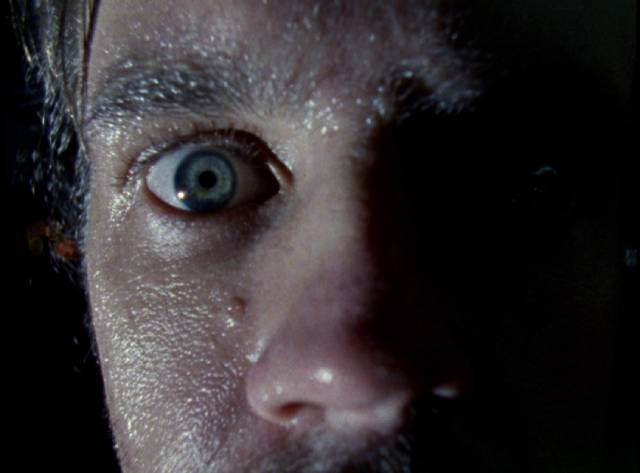
The four-disk set produced by Scream Factory in collaboration with IFC and Glass Eye Pix is as fine a showcase as a Fessenden fan could hope for. The transfers, made under the director’s supervision, are all excellent, and each movie gets a commentary from Fessenden (Wendigo gets an additional actor commentary). There’s a making-of for each film, ranging from a half-hour to feature-length, plus archival footage, deleted scenes, short films (including his 18-minute student film taking a first run at Habit), and some Glass Eye Pix promotional material. Many of the extras are introduced by Fessenden and these clips, along with a 20-minute interview conducted by Adam Nayman, show the director to be laid back, pleasant and very thoughtful about his own work. During the interview there’s a moment which throws some unexpected light on his work, particularly Wendigo and The Last Winter, when he references Algernon Blackwood’s 1907 novella The Willows as an influence; that story’s evocation of supernatural forces impinging on the natural world, much admired by H.P. Lovecraft and others, in retrospect provides an obvious model for the ghostly manifestations in Fessenden’s pair of Nature’s revenge movies. The reference also indicates the depth of Fessenden’s immersion in the genre he has chosen as a vehicle to express his concern for people and the world(s) they inhabit.
This set is one of my most satisfying recent acquisitions. In light of these four movies and Depraved, maybe it’s time to revisit Beneath and see if I missed something on my first two viewings.
Comments